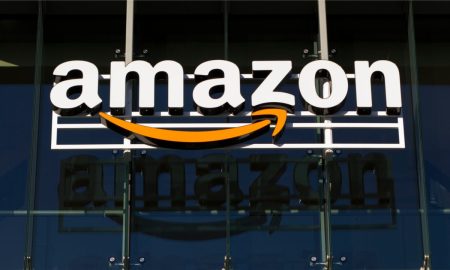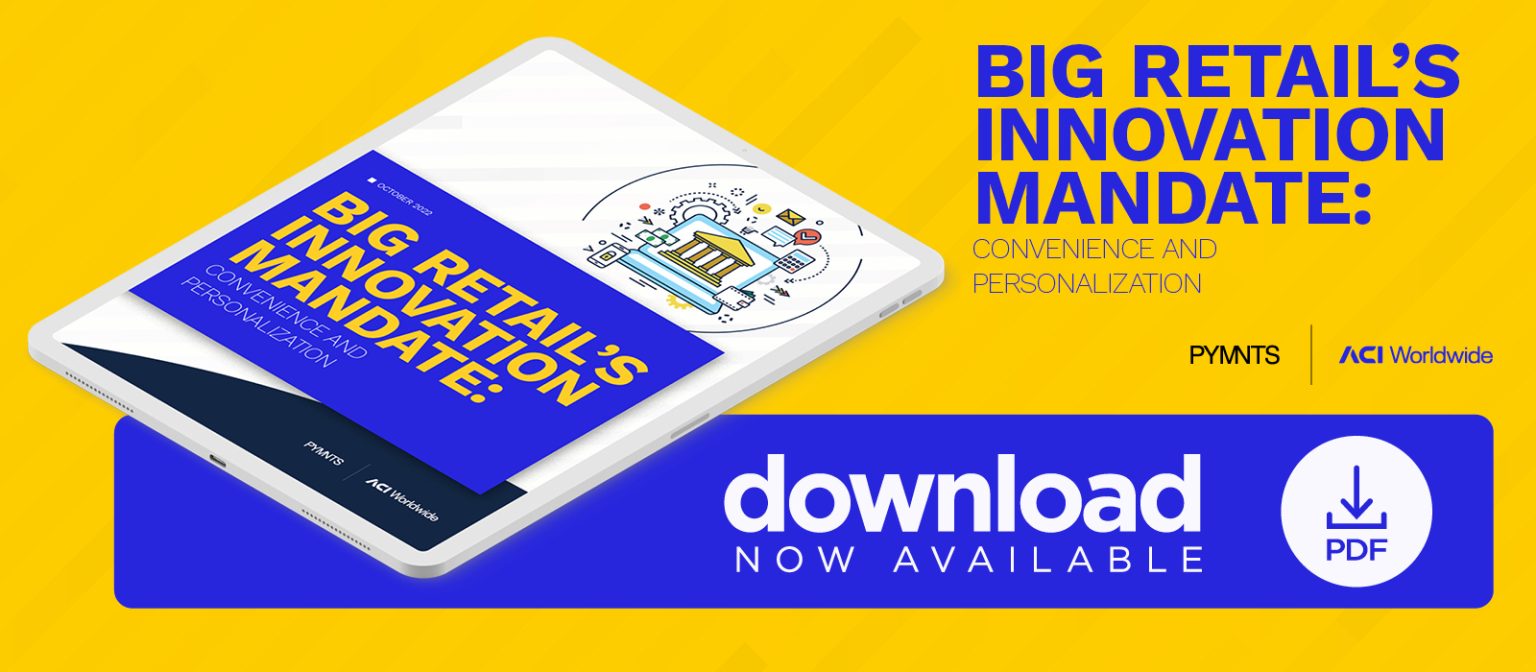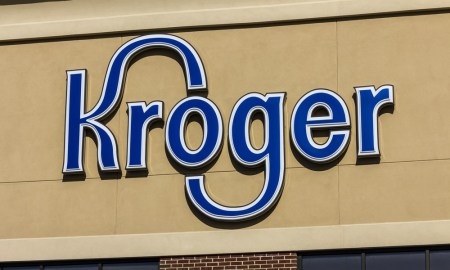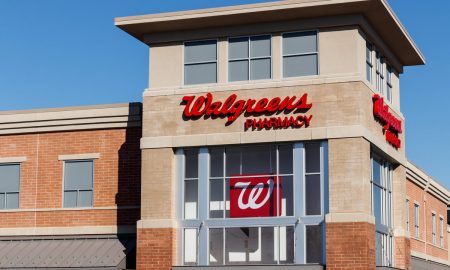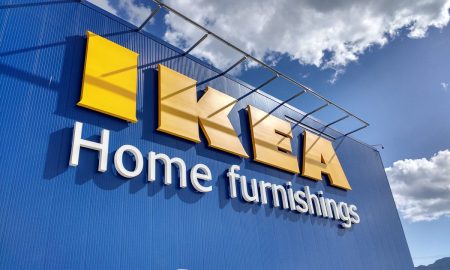Apple, Peloton Winners in Amazon’s Early Holiday Sale
October 13, 2022 - 2 years ago
Amazon said shoppers bought more than 100 million items during its Prime Early Access Sale this week.
The two-day sale — billed by Amazon as its earliest-ever holiday shopping event — drew in tens of millions of Amazon Prime members, the company said in a news release Thursday (Oct. 13).
Top sellers included Apple’s Macbook Air M1; the Peloton Bike; Bose earbuds and headphones; Casper pillows and toppers; and hair dryers, vacuums and air purifiers from Shark, according to the release.
There were also sold 8 million toys sold, Amazon said in the release, quoting Stacy Katz, co-creator of the Not Parent Approved game.
“Opportunities like Prime Early Access Sale have created a powerful boost to our business, as well as offering customers deep discounts and value,” Katz said in the release. “On the first day of the sale, we experienced a 500% increase in units sold.”
PYMNTS noted earlier this week that the sale could serve as a “retail windsock,” offering clues as to whether a broader swath of consumers will hold back on vital holiday 2022 spending.
Read more: Amazon’s Prime Early Access Sale Will Be Retail’s Inflationary Windsock
The sale came during a week that historically belonged to Columbus Day sales. But as retailers emerged from the pandemic, the day was used as an opportunity for destination businesses — both online and off — to grab scarce dollars before they were spent elsewhere, including at similar events held by Walmart and Target.
This week also saw Adobe Analytics predict that online spending during the season will grow just 2.5% — the lowest level since the company began monitoring this spending in 2015.
See more: Holiday-Related Commerce Expected to Slow or Even Drop
In addition, when Adobe Analytics provided a range of possible outcomes, the projections ranged from a drop of 2% to a rise of 5%.
For all PYMNTS retail coverage, subscribe to the daily Retail Newsletter.
Supermarkets Kroger, Albertsons Could Combine
October 13, 2022 - 2 years ago
Two of the country’s biggest supermarket chains, Albertsons and Kroger, are reportedly in talks to merge in a deal that could have a potential market value of about $50 billion.
Negotiations could conclude this week and result in an agreement, Bloomberg reported on Thursday (Oct. 13) citing unnamed sources with insider information.
If a deal is reached, it would be the largest grocery store agreement since 2006 and the biggest retail transaction in a number of years, per Bloomberg data.
See also: Report: M&A Value at Lowest Level Since 2009
Headquartered in Boise, Idaho, Albertsons has 2,250 stores and 270,000 employees, making it the fourth-largest supermarket with a 5.7% market share, per Numerator data. Kroger is headquartered in Cincinnati, Ohio, has 2,721 retail locations in 35 states and ranks second with a 9.9% market share.
Any possible transaction agreement between the two supermarkets could face scrutiny from antitrust regulators and everything is preliminary, including structure and price, sources told Bloomberg.
PYMNTS reached out to Albertsons and Kroger for comment.
Read more: Smaller Grocers Playing Loyalty Catch-Up
“This is the type of transaction that really looks good on paper, but the actual practicality of achieving regulatory approval by the FTC could be difficult,” said Jennifer Bartashus, an analyst at Bloomberg Intelligence. “If you think about the store bases of the two respective entities, there is a lot of overlap in very competitive markets.”
Rupesh Parikh, an analyst at Oppenheimer & Co, told Bloomberg that while both chains have complementary locations on the West Coast, Kroger has a small footprint in the Northeast. A combined entity could deliver benefits like increased purchasing power and shopper rewards, as well as boost resources for technology investments.
Related: Grocers Split on Self-Checkout Amid Mixed Shopper Reactions
Albertsons owns Acme, Tom Thumb, Shaw, Safeway, Jewel-Osco and Market Street grocery chains and said earlier this year it was looking at ways to create more value for shareholders, Bloomberg reported.
79% of Merchants Tout Importance of Digital Coupons In-Store
October 13, 2022 - 2 years ago
In striving to keep consumers spending, retailers are increasingly turning to tech-enabled ways to keep some competitive advantages in place.
As detailed in the report “Big Retail’s Innovation Mandate: Convenience and Personalization,” a PYMNTS and ACI Worldwide collaboration, more than 300 retailers in the United States and the United Kingdom weighed in on what they thought the most important considerations would be — in terms of digital tools — to keep foot traffic flowing — and to keep consumers loyal. U.S. merchants had at least $1 billion in annual revenues, while those in the U.K. had revenues of at least $127 million.
Data showed that the in-store experience must be convenient and personalized.
Digitization is also key to the mix as consumers prowl the aisles. Only half of retailers are satisfied with their current digital tools and the customer experiences they can offer, which indicates a realization that if they do not mesh the brick-and mortar and online experiences into a seamless continuum, consumers will vote with their feet.
The chart details the digital capabilities that these merchants — across general retail, grocery and convenience stores, and automotive segments — deem the most important. Mobile apps are up there; so are coupons and rewards.
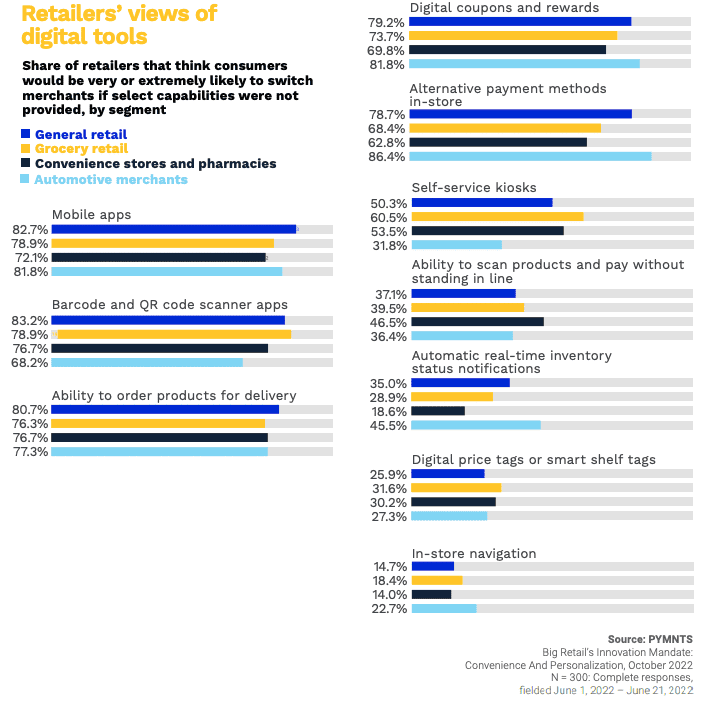
Kroger, Albertsons Reportedly in Talks to Join Forces Against Walmart
October 13, 2022 - 2 years ago
In the fight for share of stomach, the leading pure-play grocers are teaming up against mega-retailers.
The Kroger Co., the largest pure-play grocery retailer in the United States, is in talks with its competitor, second-largest pure-play grocer Albertsons Companies, to merge, according to sources familiar with the matter, as Bloomberg News reported Thursday (Oct. 13).
While the deal could still fall through, and while it seems likely that such a merger could be subject to federal interference on the basis of antitrust laws, the sources noted that the two companies could reach an agreement and announce the results within the week.
Such a merger would dramatically change the competitive landscape of United States grocery. Walmart is far and away the country’s leading grocery retailer, with the two pure-play grocers’ collective sales still not threatening the mega-retailer’s lead, but they would certainly come closer. Additionally, if no longer competing with each other, the new mega-grocer would have a greater ability to dedicate its resources to taking on Walmart head-on.
According to data from PYMNTS’ study “Decoding Customer Affinity: The Customer Loyalty to Merchants Survey 2022,” created in collaboration with Toshiba Global Commerce Solutions, which draws from a census-balanced survey of more than 2,000 U.S. consumers, 9.1% of grocery shoppers reported purchasing from Kroger in the previous month. Meanwhile, 2.4% had purchased from Albertsons’ Safeway brand. Even combining these two would not meaningfully compromise Walmart’s lead, with 27.5% purchasing that month, but it would bring the grocers that much closer.
Get the report: The Customer Loyalty To Merchants Survey 2022
As those figures would indicate, Kroger is a significantly larger company than Albertsons, with the former’s annual revenue coming in at $137.9 billion last year while the latter’s amounted to $71.9 billion.
Grocers have been in a challenging position this year, as rising food prices have compromised their margins. On the one hand, these trends have many consumers trading down from restaurants to more affordable at-home options, a tailwind for grocers. On the other, consumers have been doing everything that they can to pare back their spending.
Data from PYMNTS’ study “Consumer Inflation Sentiment: Inflation Slowly Ebbs, But Consumer Outlook Remains Gloomy,” which draws from an August survey of 2,169 consumers, finds that 62% are cutting down on unnecessary grocery expenses and 48% are switching to cheaper merchants. By combining their resources, the two companies can more effectively combat trade down to Walmart or to dollar stores.
Joining forces could also help the grocers pull well ahead of other major retailers with grocery businesses such as Amazon and Costco, as well as other notable pure-play grocers such as Publix and Ahold Delhaize’s U.S. branch.
Additionally, the two companies would be well-poised to take on the growing eGrocery market, with both grocers already having invested in free delivery membership programs to drive digital loyalty. Plus, Kroger has been rapidly building out its fulfillment network with its automation- facilities opening across different parts of the United States, built in partnership with United Kingdom-based grocery technology company Ocado Group.
Related news: Grocers Expand Direct Delivery to Cut Out Last-Mile Middlemen
Kroger and Albertsons did not immediately respond to requests for comment.
Smaller Grocers Playing Loyalty Catch-Up
October 13, 2022 - 2 years ago
A shift is emerging between grocers that have the resources and the scale to make a subscription model possible, and smaller brands for which a more traditional loyalty model is still the most effective tool within their reach.
The Fresh Market, a chain based in Greensboro, N.C., with 160 stores across 22 U.S. states, announced Wednesday (Oct. 12) that, within months of its loyalty program’s launch in March, the brand has reached more than 1 million members.
“The Ultimate Loyalty Experience allows our guests to make special occasions truly memorable by offering the quality that they know and trust from The Fresh Market at members-only pricing,” Jeff Snyder, director of loyalty at The Fresh Market, said in a statement. “That’s in addition to several surprise and delight elements of the program that engage our guests.”
The program is not a points-per-dollar one but rather one that promises lower prices on certain items and periodic free items or other rewards.
Certainly, a significant share of grocery shoppers are interested in being rewarded for their loyalty. According to data from PYMNTS’ study “Decoding Customer Affinity: The Customer Loyalty to Merchants Survey 2022,” created in collaboration with Toshiba Global Commerce Solutions, which draws from a census-balanced survey of more than 2,000 U.S. consumers, 42% of grocery shoppers state that the availability of loyalty programs with rewards they like would improve their loyalty to merchants.
Get the report: The Customer Loyalty To Merchants Survey 2022
Notably, however, only 5% of consumers state that loyalty programs are the single most influential factor when selecting a grocer from which to purchase. Grocery shoppers are far more motivated by factors such as price and proximity.
In fact, the grocery loyalty space has been evolving in the recent past to the point where, for major brands, it is no longer enough simply to offer rewards points for each purchase. Rather, leading grocers are leveraging membership programs, offering free delivery and fuel discounts for a set monthly or annual rate, to create deeper relationships with their customers.
Over the summer, Kroger, the United States’ largest pure-play grocer, announced that it is launching its Boost program nationwide. Walmart, the largest grocer overall, has had its Walmart+ membership program since 2020. Albertsons launched its FreshPass subscription last year.
Yet, for smaller brands, the kinds of promises these programs entail — offering free delivery, greater discounts and so on — can make the investment required prohibitive. Consequently, rewards programs in the more traditional sense remain their best tool for incentivizing loyalty.
Meanwhile, some eGrocers are turning away from loyalty programs entirely.
In an interview with PYMNTS, Alex Weinstein, chief digital officer at New York-based artificial intelligence (AI)-focused online grocer Hungryroot and former senior vice president of Growth at Uber Eats, argued that rewards programs are only necessary when merchants are more or less interchangeable with another. In contrast, by this logic, grocers with a sufficiently unique value proposition do not need them.
“Why do grocers create loyalty programs? Why are their loyalty programs like DashPass and Uber One and Grubhub+ in restaurant food delivery? Ultimately, all of this is in an attempt to drive value for the consumers for just one big reason: to take a bigger share of wallet,” Weinstein said. “But ultimately, frankly, you don’t create loyalty programs if your product is truly differentiated.”
Read more: Hungryroot: You Don’t Need Loyalty Programs if Your Product Is Differentiated
The ‘Wealth Effect’ Takes a Hit as Highest Earners Start Fearing Recession
October 13, 2022 - 2 years ago
On a day when headline inflation reports showed prices increases stubbornly staying about 8%, a deeper dive into the impact that figure is having on the psyche of spending is warranted, as high-earning, wealthy consumers are joining the less affluent in adopting a more cautious stance and outlook.
This, as the stock market is down 25% year-to-date, real estate prices retreating, interest rates on the rise and prices continuing to climb with 40-year record inflation threatening to burst into open recession.
At some point even the more monied among us start sweating a troubled economy, as seems to be the case in the fourth quarter of 2022. Even as the U.S. Bureau of Labor Statistics (BLS) released September pricing data on Thursday (Oct. 13) showing another month-over-month rise in costs, some Wall Street stalwarts began to show inflationary stressors.
Per the BLS numbers released Thursday, prices for everything except gas, used cars and apparel rose again in September, coming in at 8.2% this year through September, which is an incremental improvement from August’s 8.3% rate, but at a more accelerated rate.
As was widely reported, Citi analyst Arren Cyganovich downgraded American Express to Sell from Neutral, saying in a client communiqué that “While the recession is projected to be mild, the impact to our EPS can be rather large as we are coming off of record low credit losses and are now forecasting slightly higher than normal credit losses in 2024.”
Underlying this is “the wealth effect,” an economic theory positing that the more financially secure people feel, the more money they spend in both amount and frequency.
PYMNTS’ Karen Webster analyzed downsides of this in “Why Retailers Should Worry About Inflation but Dread the Wealth Effect,” acknowledging the impact of inflation on lower earners, and saying “it’s the wealth effect that is the more important determinant of whether consumers with money to spend will actually open their digital wallets and spend it.”
She added, “That’s particularly true for high earners — they have probably had the greatest proportion of wealth destroyed, in part by the massive drop in stock prices, and they could be hit more if the continued decrease in housing demand sends housing prices south. Because high earners account for so much of the retail economy, their pull-back in spending could be the most damaging to it.”
We saw evidence of this starting in summer, with PYMNTS reporting, “The share of high-income consumers living paycheck to paycheck increased by nine percentage points in June. The survey found that the share of consumers earning more than $100,000 a year who were living paycheck to paycheck leapt from 36% in May to 45% in June.”
Underscoring that, new PYMNTS data being published in October finds that 42.5% of those earning over $100,000 per year believe that the economy is already in a recession.
See also: $100K+ Households Saw Biggest Increase in Paycheck-to-Paycheck Living
Secure No More
While luxury retail has continued to perform well in the face of inflation this year, recession is another matter, and high earners who often have stock holdings to match are starting to get spooked as the value of their investments decreases, inevitably leading to belt-tightening.
According to the PYMNTS study “Consumer Inflation Sentiment: Inflation Slowly Ebbs, But Consumer Outlook Remains Gloomy” based on surveys of close to 2,200 U.S. consumers, “Overall, 32% of consumers expect their financial standing to worsen in the next year, down ever-so-slightly from 35% in July,” a statistic that includes high earning Americans.
That report added, “Consumers say that the rising cost of essentials such as groceries, housing and fuel forces severe cutbacks on discretionary spending, and 70% of the surveyed consumers who made retail purchases have cut down on nonessential retail spending,” with 61% of those surveyed saying their households cannot handle any further price increases.”
Insulated from 2022 price hikes until now, wealthier Americans are likely to begin cutting back in their own way, be that the lower priced SUV or a high-end vacation not taken.
As Webster wrote, “Some dismal scientists worry that future stock market and housing market instability at the levels experienced in the first half of 2022 could further weaken those household balance sheets and dent GDP growth. Why? Because consumers may not spend — even those with money in their accounts who could spend — unless they feel confident that their financial situation is secure.”
Walgreens Charts Simplified Future as ‘Consumer-Centric Healthcare’ Company
October 13, 2022 - 2 years ago
In what could be characterized as the latest entry in the “COVID-19 Changed Everything” file, Walgreens Boots Alliance said Thursday (Oct. 13) that it is simplifying its operations under three business segments as part of its transformation to become a “consumer-centric healthcare” company.
This, as the Chicago-based retail chain, which operates 13,000 stores in the United States, Europe and Latin America, told investors in an earnings report that sales at its largest unit — the U.S. Retail Pharmacy segment — fell 7% in its fiscal fourth quarter that ended Aug. 31, while its exponentially smaller U.S. Healthcare unit saw sales up 34%.
“Our script count is the one soft spot for the year to call out,” Walgreens CEO Rosalind Brewer said in the company’s webcast, noting domestic digital sales were up 34% for the 2022 fiscal year.
With prescriptions down alongside a retreat in COVID-19 vaccines and related care, Walgreens — like all of its major peers — is making a shift to deliver a range of treatments and services to customers that go well beyond dispensing medicine.
“We are rapidly scaling U.S. healthcare and are already raising long-term sales targets with a clear path to achieve profitability starting in fiscal year ’24,” Brewer said in the webcast. “It’s early, but our strategy is working, and we’re making good progress on each of our four priorities, which are simplifying and strengthening the company.”
Simple and Strong
While simplicity and strength are laudable objectives for any business, the fact remains that Walgreens stores accounted for 82% of its revenue — or $26 billion of its reported top line of $32 billion — compared to just $622 million delivered by its now elevated U.S. Healthcare business.
Even so, Walgreens’ leadership team told investors that this is the perfect time to build and broaden the business, citing the historic macro challenges that are affecting its customers.
“With inflation at a four-decade high, consumers are expressing uncertainty about the future and seeking value,” Brewer said, noting the increased priority customers are placing on health and wellness today, versus just two years ago, in what is set to be a lasting side-effect of sorts from the pandemic.
With that increased priority in mind, Walgreens aims to boost cohesion between its units to fuel the delivery of more services to more customers more quickly and conveniently than before.
“We’re leveraging our footprint, our digital capabilities, our consumer insights and our essential services to drive overall retail pharmacy growth,” Brewer said, calling the core business resilient and “over-indexed to need-now categories.”
“We are better positioned now than we were in prior periods of economic turbulence,” she added.
In-Home Care
In addition to continued expansion of the COVID-era’s increased in-store activities, Walgreens is touting its boosted offering in the rapidly growing in-home treatment business as a centerpiece of consumer-centric focus, as evidenced by the accelerated acquisition plan to full ownership of CareCentrix announced earlier this week. When CareCentrix is added to Walgreens’ Village MD and Shield units, Brewer told investors that the combination has delivered top-line growth of 75% within its U.S. Healthcare segment
“We’re making important strides and consistent progress and building our next growth engine,” Brewer said.
For all PYMNTS retail coverage, subscribe to the daily Retail Newsletter.
Core Inflation Hits 40-Year High as Consumers Weigh Spending Priorities
October 13, 2022 - 2 years ago
Core inflation hit its highest pace since 1982 in September, with more people living paycheck to paycheck and struggling to stay on top of bills.
The core measure of the Consumer Price Index (CPI) — which strips out food and energy — hit a rate of 6.6% compared to August’s 6.3%, a situation that could mean the battle against inflation isn’t over, according to the report from the Bureau of Labor Statistics (BLS) on Thursday (Oct. 13).
On a monthly basis, the core CPI rose 0.6% in September, the same as in August, and up from 0.3% in July.
See also: New Study: 60% of US Consumers Have Cut Spending Due to Inflation
Escalating inflationary pressures have changed the lifestyles of many American consumers, with 60% of people surveyed in a recent PYMNTS study indicating they were living paycheck to paycheck, with almost 25% saying they had trouble paying bills.
PYMNTS research also found that 92% of consumers have noticed higher product prices and almost three-quarters have seen the increases in their monthly bills. While the study “New Reality Check: The Paycheck-To-Paycheck Report: The Inflation Edition” showed that all income levels cited increases in products or bills at similar rates, financially struggling consumers were more likely to consider such increases to be widespread and distressing.
Read more: Paycheck-to-Paycheck Consumers Rethink What’s Essential
The BLS report showed that housing prices — about one-third of household spending and a bigger percentage of core inflation — led the way, with the index up 0.7%. Transportation, including air travel and mass transit, saw prices increase 1.9% in September. Medical services went up 1%.
Living paycheck-paycheck combined with worsening inflation is causing consumers to pause and take stock of what “essential” really means for everything from everyday bargains to monthly subscriptions, per PYMNTS study.
Matt Pavich, senior director of retail innovation at Revionics, an AI-powered retail price optimization solutions company, told PYMNTS that with retail prices up again, inflation will be a factor for consumers when it comes to holiday shopping.
“Retailers will absolutely need to focus on their price perception and provide consumers with great value and offers on the items that they care most about across all channels headed into the winter. Throughout the year, this has mostly involved using analytics and AI to surgically balance pricing moves in response to rising costs with the goal of meeting the demands of budget-conscious consumers,” Pavich said.
“As the holidays approach, this remains as important as ever, but also means that promotions and markdowns will become more critical. Savvy retailers with the best analytics should focus heavily on improving their price perception through winning promotions, appropriately timed markdowns, and a strong offering of high-value private label products,” he added.
Ikea Pushes Affordability as Inflation Looms
October 13, 2022 - 2 years ago
Home furnishings company Ikea said retail sales have picked up over the past year as the world has reopened, but inflation has led to higher prices and supply chain issues have made it difficult to put products on the shelves.
Total Ikea retail sales rose 6.5% year over year during the year ended Aug. 31, the company reported in a Thursday (Oct. 13) press release.
“This year’s challenges continue to give us perspective into people’s life at home, our business and our priorities,” Inter Ikea Group CEO Jon Abrahamsson Ring said in the release. “Homes now fulfill more functions and solve more problems than ever before. That means people need home furnishings and solutions at an affordable price.”
Noting that sales in terms of money increased — due to rising costs and higher prices — but sales in terms of quantities of product have not kept pace with that growth, Ikea said in the release that it aims to deliver affordability.
“Unfortunately, we can’t ignore surging raw material and transport costs,” Abrahamsson Ring said. “Long-term, we remain committed to affordability for the many people around the world.”
Ikea has also continued to expand to new markets. During the last year, the company opened its first stores in Chile, Estonia, Oman, the Philippines and Puerto Rico. It plans to expand to Colombia and Peru in the coming years. At the same time, the company is scaling down its presence in Russia in response to the war in Ukraine, according to the release.
As PYMNTS reported in September, Ikea is also embarking on a $3 billion store refresh program and has expanded the perks of its free loyalty club in the United States.
Read more: Ikea Looks to Drive in-Store Traffic With 5% Loyalty Discount
These moves come even as Ikea is more than holding its own in the struggling furniture segment. In financial year 2021, the company took in over three times the sales of rival company Wayfair.
For all PYMNTS retail coverage, subscribe to the daily Retail Newsletter.

